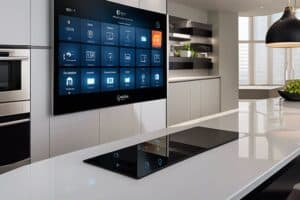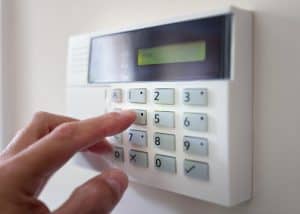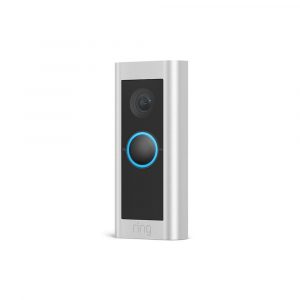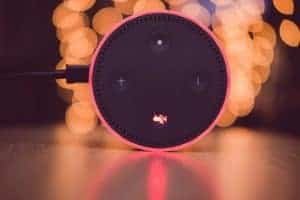Delving into the world of smart home technology can be both fascinating and overwhelming. With the plethora of gadgets available, it’s essential to understand how they all work together to create a connected home that streamlines your everyday life. Whether it’s controlling your lights, thermostat, security system, or entertainment devices, the seamless interaction of these gadgets is key to a truly smart home experience. In this blog post, How do smart home remotes interact with smart devices? we’ll explore how these gadgets communicate and seamlessly integrate to create a connected smart home. You’ll gain a better understanding of how your devices work in harmony to make your home safer, more energy-efficient, and simply more convenient.
Key Takeaways:
- Interoperability: Smart home gadgets work together in a connected home through interoperability, allowing devices from different manufacturers to communicate and work together seamlessly.
- Hub or Bridge: A central hub or bridge is often used to connect and control smart home gadgets, acting as a unifying platform for different devices to work harmoniously.
- Wireless Communication: Smart home gadgets typically communicate with each other using wireless technologies such as Wi-Fi, Bluetooth, Zigbee, or Z-Wave, enabling convenient and efficient connectivity.
- Automation and Integration: Smart home gadgets can be programmed to work together through automation, allowing them to coordinate and perform tasks in response to specific triggers or conditions.
- Smart Assistants: Voice-controlled smart assistants, such as Amazon’s Alexa or Google Assistant, can further enhance the integration of smart home gadgets by providing a single interface for controlling multiple devices.
The Technology Behind Smart Devices
When you step into the world of smart home gadgets, you are actually taking a deep dive into the innovative and interconnected world of technology. While these smart devices may appear seamless in their functioning, there is a complex web of technology and protocols that work behind the scenes to enable them to communicate and function together seamlessly. In this chapter, we will explore the technology powering smart devices and how they work together in a connected home.
Wireless Communication Protocols
One of the key elements enabling smart home gadgets to work together is the use of wireless communication protocols. These protocols, such as Wi-Fi, Bluetooth, Zigbee, and Z-Wave, allow your smart devices to communicate with each other and with your smartphone or hub. Wi-Fi is the most common and widely used protocol, offering high-speed data transfer and a wide range. Bluetooth is another popular protocol, known for its energy efficiency and the ability to connect devices over short distances. Zigbee and Z-Wave are designed specifically for the smart home environment, providing low power consumption and the ability to create a mesh network for more extensive coverage.
The Role of Sensors and Actuators
Smart devices rely on sensors and actuators to gather and interact with the physical world around them. Sensors detect changes in the environment, such as motion, light, temperature, or humidity, and transmit this data to the device or hub. Meanwhile, actuators are responsible for carrying out the actions as instructed by the device or user, such as turning on a light or adjusting the thermostat. These components play a crucial role in ensuring that your smart devices can sense, respond, and interact with your environment, making your home truly intelligent and responsive to your needs.
Smart Home Ecosystems
Smart home ecosystems encompass the network of interconnected devices and gadgets that work together to create a seamless and efficient living environment. These ecosystems allow you to control and automate various aspects of your home, such as lighting, heating, security, entertainment, and more, using a central hub or compatible apps on your smartphone or tablet.
Proprietary vs. Open Ecosystems
When it comes to smart home ecosystems, you will come across proprietary and open systems. Proprietary ecosystems are designed and controlled by a single company, meaning that all the devices and gadgets within the ecosystem are made to work exclusively with each other. This can limit your options and flexibility when expanding your smart home setup with different brands or devices. On the other hand, open ecosystems allow devices from multiple manufacturers to work together, giving you more freedom to choose the best products for your specific needs and budget.
Interoperability Standards and Organizations
Interoperability standards and organisations play a crucial role in ensuring that your smart home gadgets can communicate and work together seamlessly, regardless of their brand or manufacturer. Standards such as Zigbee, Z-Wave, and Thread define common protocols that enable devices to talk to each other, while organisations like the Open Connectivity Foundation (OCF) work towards creating a universal standard for IoT devices to ensure interoperability. By adhering to these standards, you can be confident that the smart home devices you invest in will be compatible with each other, creating a more harmonious and connected living space.
Setting Up a Connected Home
When setting up a connected home, it’s important to carefully select the smart home gadgets that will work together seamlessly to make your life easier and more convenient. This includes choosing the right gadgets and integrating them into a control platform that allows you to manage them all in one place.
Choosing the Right Gadgets
When choosing smart home gadgets for your connected home, you need to consider the compatibility and connectivity of the devices. Make sure that the gadgets you select are able to communicate and work together effectively. You should also consider the security implications of each device, as data privacy and protection are major concerns in the smart home environment. Additionally, consider the ease of use and installation, as well as the support and compatibility with other smart home ecosystems.
Integration and Control Platforms
Integration and control platforms are essential for managing all the smart home gadgets in your connected home. Look for a platform that allows you to centralise control of your devices, such as a smart speaker or a dedicated smart home hub. Make sure the platform is able to handle a variety of different types of devices and offers the functionalities you need, such as scheduling, automation, and remote access. It’s also important to consider the reliability and security of the platform, as it will be the central point of access for all your connected devices.
Real-world Applications and Benefits
So, you’ve set up your smart home with various gadgets and devices, but how exactly do they work together to create a truly connected living space? In this chapter, we’ll explore the real-world applications and benefits of a connected home, and how smart home gadgets collaborate to enhance your lifestyle.
Energy Management and Savings
When it comes to energy management and savings, a connected home can revolutionise the way you use and consume energy. By integrating smart thermostats, lighting systems, and energy-efficient appliances, you can monitor and control your energy usage with ease. This means that you can make adjustments to your heating, cooling, and lighting settings remotely, ensuring that you only use energy when you need it. Furthermore, the automation capabilities of smart home devices enable you to schedule energy usage based on your daily routines, ultimately leading to significant energy savings over time.
Security and Safety Enhancements
Enhancing the security and safety of your home is one of the most invaluable benefits of a connected home. With smart security cameras, door locks, and motion sensors, you can monitor and protect your property from anywhere in the world. Moreover, the integration of smoke detectors and carbon monoxide sensors with your smart home system can provide you with instant alerts and notifications, ensuring peace of mind and a swift response in case of emergencies.
Challenges and Considerations
When setting up a connected home with smart home gadgets, there are certain challenges and considerations you need to keep in mind. These may include privacy and security risks, as well as compatibility and upgradability issues.
Privacy and Security Risks
One of the biggest concerns when it comes to integrating smart home gadgets is the privacy and security risks associated with them. Your personal data and information could be at risk of being hacked or compromised, especially if the devices are not adequately secured. It’s important to ensure that you take the necessary steps to secure your network and devices, such as using strong, unique passwords, enabling two-factor authentication, and regularly updating the firmware.
Compatibility and Upgradability Issues
Another challenge you may face when connecting smart home gadgets is compatibility and upgradability issues. As technology evolves, your devices may become outdated and incompatible with newer gadgets or software updates. This can lead to a lack of integration and functionality, requiring you to constantly upgrade or replace your devices to keep them working seamlessly together. It’s essential to research and choose devices that are known for their compatibility and upgradability to avoid such issues.
The Future of Connected Homes
As technology continues to advance at a rapid pace, the future of connected homes holds both exciting possibilities and potential challenges. In this chapter, we will explore the emerging technologies and trends that are shaping the connected home landscape, as well as make predictions for how smart home evolution will unfold in the coming years.
Emerging Technologies and Trends
One of the most significant emerging technologies in the connected home space is the Internet of Things (IoT), which enables everyday devices to connect and communicate with each other through the internet. This allows for seamless integration and automation of various smart home gadgets, such as thermostats, lighting, and security systems. Additionally, artificial intelligence and machine learning are playing a crucial role in the development of smart home systems, enabling them to learn user preferences and adapt to your habits and needs. Another trend to watch out for is the expansion of voice control technologies, which are increasingly being integrated into smart home devices, allowing you to control them using voice commands.
Predictions for Smart Home Evolution
Looking ahead, the evolution of connected homes is expected to continue at a rapid pace. As technology becomes more sophisticated, you can anticipate even greater integration and automation of smart home devices, making your life more convenient and efficient. However, this advancement also brings with it potential security and privacy concerns, as an increasing number of devices are connected to the internet, making them vulnerable to cyber threats. Additionally, as smart home technology becomes more widespread, there is a growing need for standardization and interoperability among different devices and platforms to ensure a seamless and user-friendly experience for you.
Conclusion
With this in mind, it is clear that smart home gadgets work together in a connected home by communicating with each other through a central hub or network. This allows you to control and automate various devices and systems in your home, such as lighting, security, heating and cooling, entertainment, and appliances. By integrating these gadgets, you can create a more convenient, efficient, and secure living environment. Additionally, the ability to monitor and adjust your home remotely using your smartphone or voice commands adds another level of convenience and peace of mind. As smart home technology continues to advance, the potential for more seamless integration and interoperability among devices will only continue to grow, making the connected home of the future an even more compelling and valuable investment for you.
FAQ
Q: What is a connected home?
A: A connected home is a home where various smart home gadgets and devices are interconnected and can communicate with each other to create an automated and efficient living environment.
Q: How do smart home gadgets work together in a connected home?
A: Smart home gadgets work together in a connected home through the use of a central hub or controller, such as a smart speaker or a dedicated smart home hub. These devices act as the central point for managing and controlling all the connected gadgets, allowing them to work together seamlessly.
Q: What types of smart home gadgets can be connected in a connected home?
A: Various types of smart home gadgets can be connected in a connected home, including but not limited to smart lights, smart thermostats, smart security cameras, smart door locks, smart plugs, smart speakers, and smart appliances.
Q: Can different brands of smart home gadgets work together in a connected home?
A: Yes, different brands of smart home gadgets can work together in a connected home as long as they are compatible with the central hub or controller being used. However, it’s important to check for compatibility before purchasing new smart home devices.
Q: How are smart home gadgets controlled in a connected home?
A: Smart home gadgets are controlled in a connected home through various methods, including voice commands using a smart speaker, mobile apps on smartphones or tablets, and automation routines set up through the central hub or controller.
Q: What are the benefits of having smart home gadgets work together in a connected home?
A: The benefits of having smart home gadgets work together in a connected home include increased convenience, energy efficiency, enhanced security, and the ability to create custom automation routines tailored to the homeowner’s preferences.
Q: Are there any security concerns related to having smart home gadgets in a connected home?
A: Yes, there can be security concerns related to having smart home gadgets in a connected home, such as the risk of hacking or unauthorized access to the devices. It’s important to take precautions such as using strong, unique passwords and keeping all devices and software up to date to mitigate these risks.







